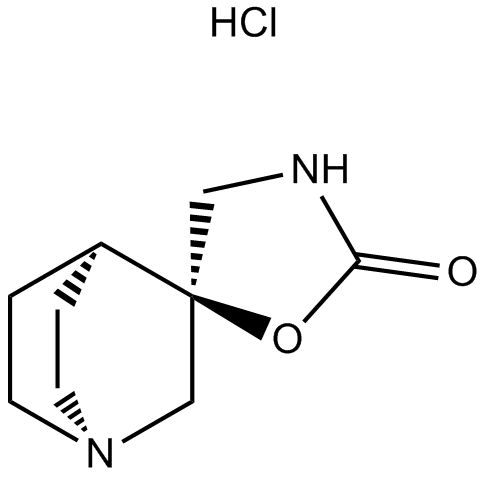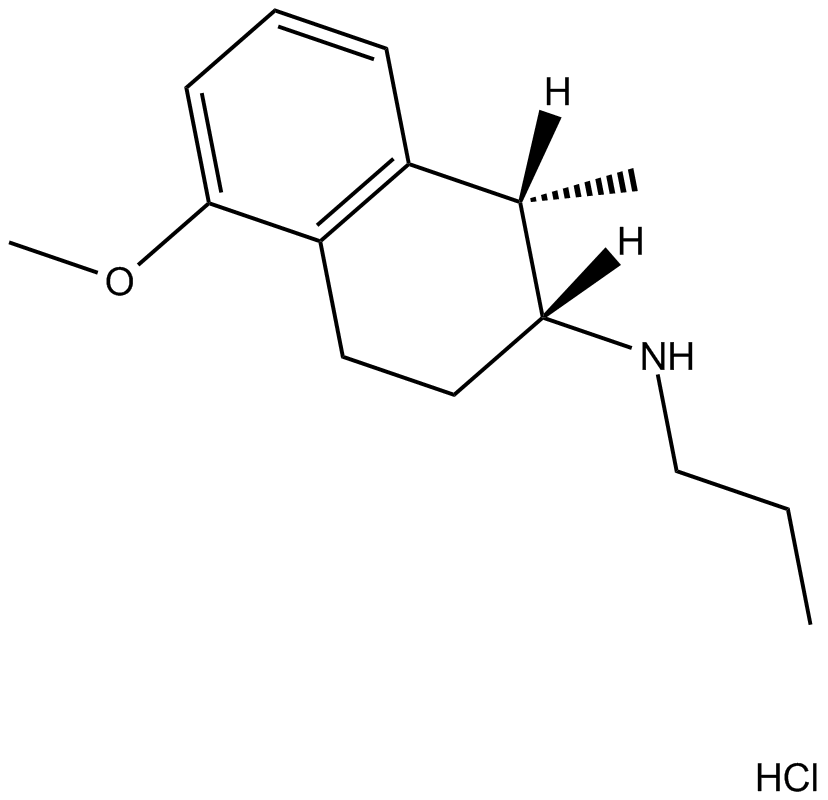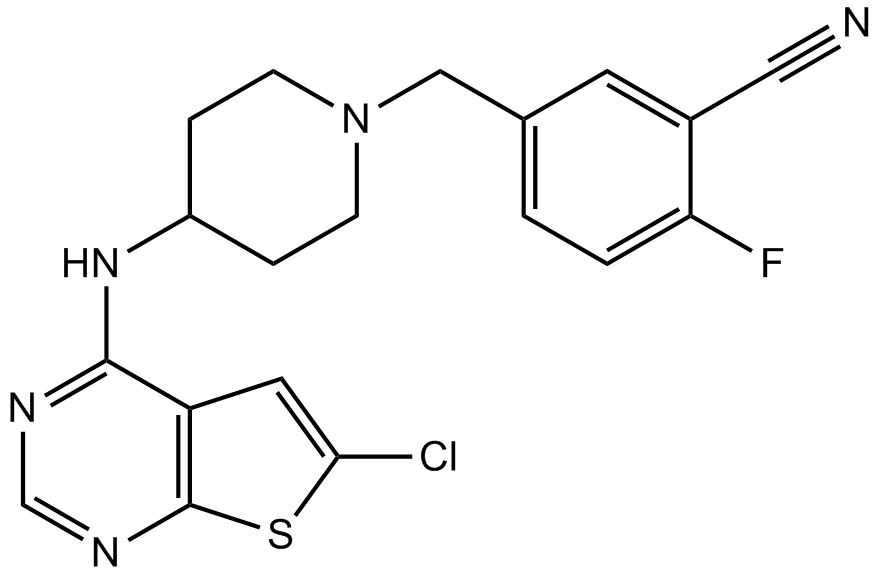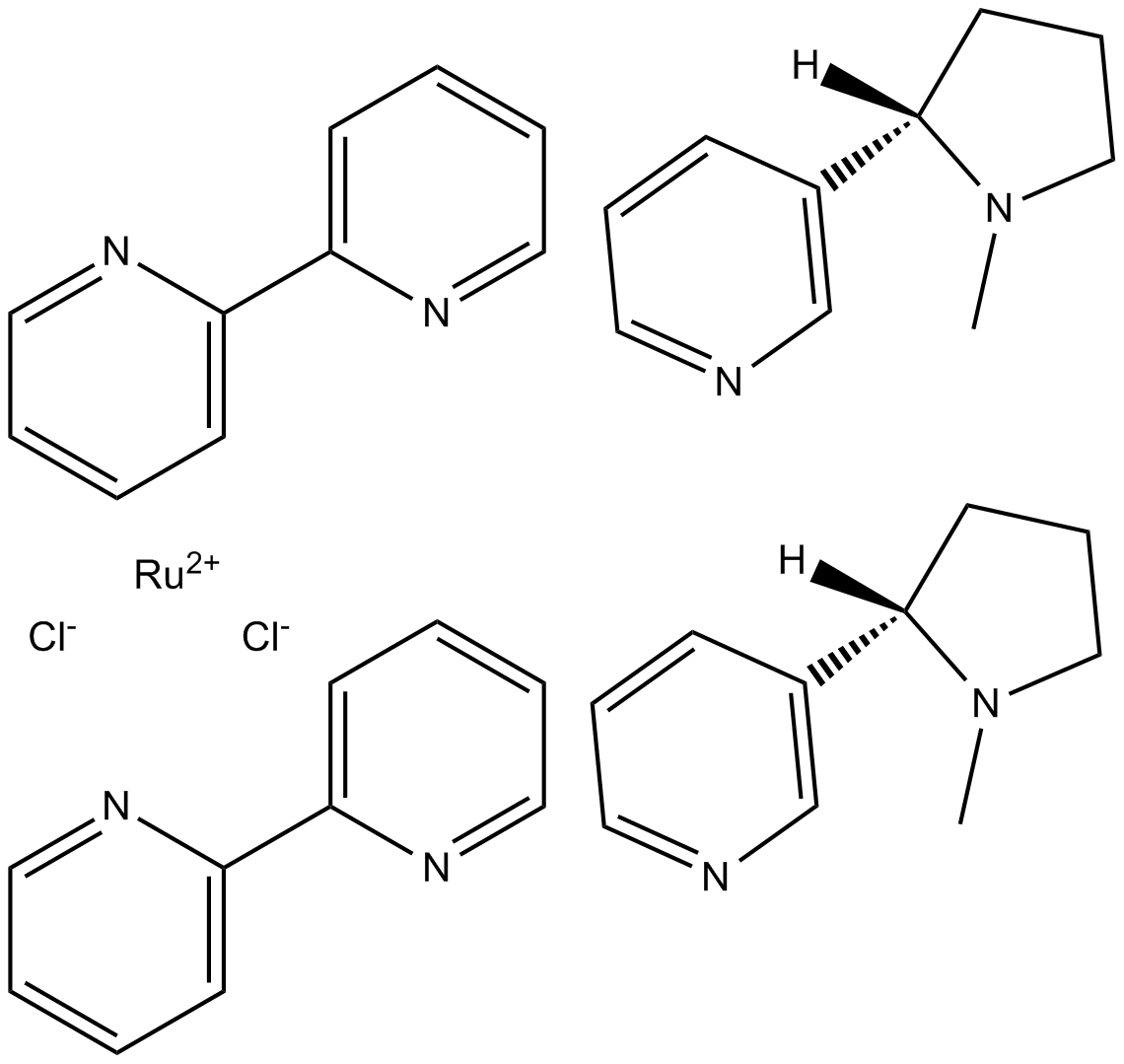Neuroscience

Neurotransmitter receptors function via various G-protein coupled and G-protein independent mechanisms that activate downstream intracellular signaling pathways such as cAMP/PKA, PI3K/AKT, phospholipase A2, and phospholipase C pathways. For instance, dopamine receptors act through adenylate cyclase to activate PKA and other signaling molecules, thereby mediate gene expression through the actions of CREB and other transcription factors. Other neurotransmitters such as NMDAR or AMPAR are associated with ion channels that control flux of Ca2+ and Na+, thus propagating the action potential across the post-synaptic neuron.
Dysfunctions in GABAergic/glutamatergic/serotonergic/dopaminergic pathways result in a broad range of neurological disorders such as chronic pain, neurodegenerative diseases, and insomnia, as well as mental disorders including schizophrenia, bipolar disorder, depression, and addiction.
-
 B1203 Iloperidone hydrochlorideSummary: D(2)/5-HT(2) receptor antagonistis
B1203 Iloperidone hydrochlorideSummary: D(2)/5-HT(2) receptor antagonistis -
 B6393 (±)-Vesamicol hydrochlorideSummary: acetylcholine transport inhibitor
B6393 (±)-Vesamicol hydrochlorideSummary: acetylcholine transport inhibitor -
 B7552 AR-R 17779 hydrochlorideSummary: Selective agonist of α7 nAChRs
B7552 AR-R 17779 hydrochlorideSummary: Selective agonist of α7 nAChRs -
 B5634 NCX 466Summary: cyclooxygenase (COX)-inhibiting nitric oxide (NO) donor
B5634 NCX 466Summary: cyclooxygenase (COX)-inhibiting nitric oxide (NO) donor -
 B6403 (+)-AJ 76 hydrochlorideSummary: Dopamine receptor antagonist
B6403 (+)-AJ 76 hydrochlorideSummary: Dopamine receptor antagonist -
 B5021 TiotidineSummary: Potent histamine H2-receptor antagonist
B5021 TiotidineSummary: Potent histamine H2-receptor antagonist -
 B5347 SC 58125Summary: COX-2 inhibitor
B5347 SC 58125Summary: COX-2 inhibitor -
 B5897 ML352Summary: Non-competitive inhibitor of the presynaptic choline transporter
B5897 ML352Summary: Non-competitive inhibitor of the presynaptic choline transporter -
 B1200 PRX-08066Summary: 5-HT2BR antagonist
B1200 PRX-08066Summary: 5-HT2BR antagonist -
 B7516 RuBi-NicotineSummary: Nicotinic receptor agonist
B7516 RuBi-NicotineSummary: Nicotinic receptor agonist

